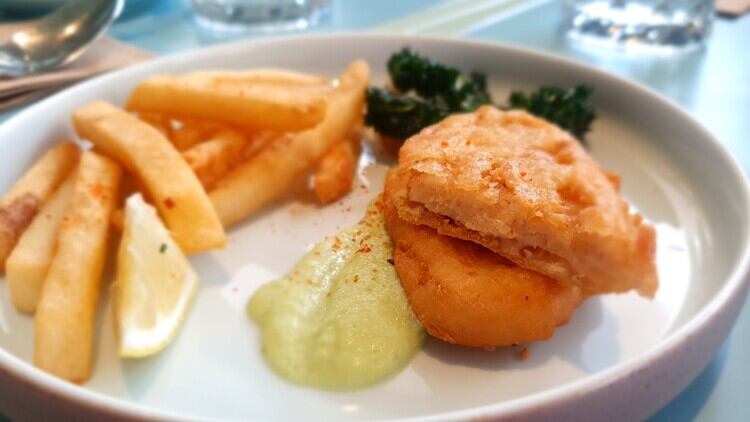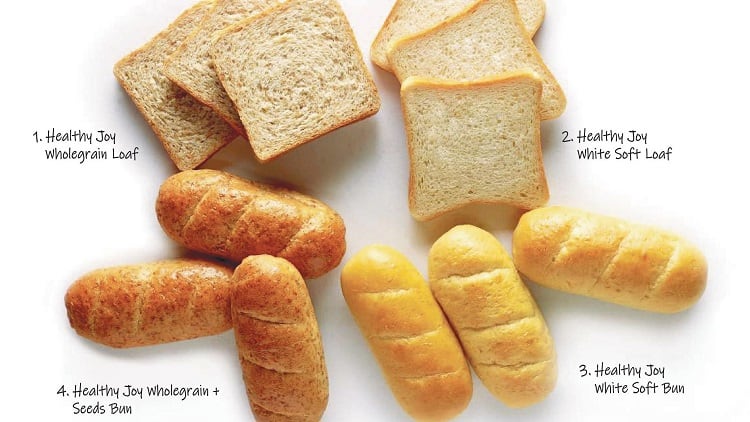The firm, established by David Yeung, the founder of Hong Kong ‘sustainable living platform’ Green Monday in 2012, has so far launched plant-based products in the US, UK, Australia and Asian markets.
One of its most recent offerings is a plant-based seafood range called OmniSeafood, believed to be the first brand in Asia to create and launch a range of seafood analogues.
According to Yeung, the formulation for the ‘seafood’ range contains lesser ingredients as compared to ‘meat’ and other products currently in the market. The lesser ingredients can be a factor to attract buyers, he said.
For the classic ‘fillet’ under OmniSeafood, it contains a blend of plant-based protein (non-GMO soy, pea and rice), canola oil, potato starch, corn starch, thickener (methyl cellulose), salt, flavour, cane sugar, yeast extract, shiitake mushroom powder, oats and wheat starch only.
In comparison, their ‘luncheon meat’ product is made from water and a protein blend of soy protein concentrates, vital wheat gluten and soy protein isolates, alongside coconut oil, yeast extract, thickeners like methylcellulose and gum arabic, potato starch, natural flavour, salt, sunflower oil, maltodextrin, anti-caking agent (silicon dioxide), natural colour (beet red), antioxidants (citric acid and ascorbic acid).
The ‘seafood’ range also has a longer shelf life of over one year, with higher fibre, potassium and calcium content.
“The tactic here is to localise and customise. For us, we even go up to fourth and fifth trials and errors before it reaches the consumer to get that texture, that umami,” Yeung told us.
For example, the ‘classic’ fillet is more palatable to the Asian palate, which prefers soups, grills and hotpots, whereas the breaded ‘golden fillet’ is suited to Western tastebuds.
The range also includes ‘tuna’, ‘salmon’ and ‘crab’ products.
“The difference between Asia and the West is that the US, UK and Australia have higher awareness and an existing demand. Therefore, the market penetration rates are higher.
“It is a matter of proposition and filling the gaps. Currently, there are not many plant-based seafood offerings available.
“Now, we need to learn and listen. There is no one-size-fits-all strategy. Singapore and Hong Kong cannot have the same approach, just as there is a difference between the UK and US markets.
“You need to have slight or even major modifications to the product formulation and offering to localise and customise. You must give different options to different people,” he explained.
Prevailing trend
Despite the marked market differences, there is a thread that connects everyone – the green, healthy, environmental-conscious lifestyle is trendy today, especially among millennials and Gen-Zs. This development drives the demand for wellness products and sustainable food innovations, said Yeung.
Nonetheless, the Asian market will still require education by the food innovators and firms.
“Due to a cultural shift and increasing affluence, consumption of meat became a status symbol in Asia. For example, we can eat meat every day today unlike in the yesteryears where we used to only eat them on special occasions.
“Today, the younger generations are moving towards another status symbol, which is placing importance to wellness and saving the climate. It’s all about social perception of this new status symbol. They consume less dairy and meat, and find food that is better for horticulture,” he said.
One fact that highly piqued Yeung’s interest as a food innovator was the inclusion of “future food” and cultivated meat in the policy document published by China’s Ministry of Agriculture and Rural Affairs under the country’s 14th Five-Year-Plan (FYP).
The FYP is important because it represents the top-most level of policymaking, which sets China’s long-term goals.
“This is a huge signal of things to come. I feel hopeful because, in many cities, you cannot function without government support. The effect can be enormous and it was a very unambiguous statement,” said Yeung.
He added that the market drivers for the development would again be the millennials and Gen-Zs as they come with “no baggage” and have “clear palates”.
Explaining further, he said it is hard to change the habit of an individual who has been eating char siu pork for six decades compared to a millennial or Gen-Z who has not been exposed to such tastes for long.
“We want to achieve high growth, but it is historically difficult. Forget next year; next month is already difficult to predict. However, we do expect a healthy growth. The strategy here is to be as nimble as possible and explore all possibilities,” said Yeung.
Omnipresence of OmniFoods
Green Monday is one of China’s 20 most influential start-ups identified by Fortune.
Since 2018, the platform developed plant-based meat products called OmniMeat through its innovation arm OmniFoods.
Despite being headquartered in Hongkong, the research and development (R&D) is done in Canada and supplies come from North America and Asia.
Currently, the firm has one manufacturing plant in Thailand to supply globally and it is located a few hours’ drive away from capital Bangkok. Yeung said the second manufacturing plant is expected to open in Guangdong in Q2 2022.
The products and its customised, localised menus are also sold in protein store and restaurants named Green Common, which are located in Hongkong, Shanghai and Singapore.
The peas, non-GMO soy, shiitake mushroom and rice-based range encompasses products such as OmniMeat ‘luncheon’, ‘strip’, ‘dumpling’ and ready-to-eat (RTE) flash-frozen meals.
The products are accessible via 30,000 to 40,000 locations worldwide, from brick-and-mortar stores, restaurant chains and supermarkets to e-commerce platforms like RedMart and Shopee.
Yeung and his company received a USD$70m funding in 2020 from TPG Capital’s The Rise Fund and Swire Pacific.




